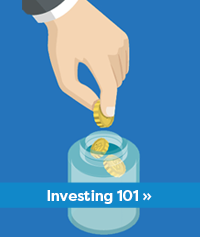Understanding Index-Linked Term Deposits

Are you looking for a low-risk investment opportunity? CUA’s Index-Linked Term Deposits might be the right fit. In this article, we’ll explore what Index-Linked Term Deposits are and how you can invest comfortably with a safety net.
What is an Index-Linked Term Deposit?
Index-Linked Term Deposits (ILTD) are fixed-term deposits that pay a return based on the performance of the S&P/TSX 60 Index. A fixed-term deposit like that of an ILTD means that you are investing for a specific period of time. At CUA, for example, ILTD terms can either be three years or five years. As the amount that you initially invested is guaranteed when the term of your deposit ends, regardless of what happens to the stock market, it will give you peace of mind and upside potential. ILTDs are quite popular with low-risk investors.
The S&P/TSX 60 Index reflects the 60 leading companies listed on the Toronto Stock Exchange. This Index provides economic diversity across market sectors including communication services, consumer staples, energy, healthcare, technology and transportation. This means that the return you see on your investment depends on the performance of these companies. That may sound like a risk, but the benefit of an ILTD with CUA is that at the end of the term, you are guaranteed your principal investment.
How do these deposits work?
As mentioned above, this product has the security of principal protection, meaning that regardless of the stock market’s performance, you are guaranteed your principal amount invested when the deposit matures. It’s important to note that with Index-Linked Term Deposits, investors can only withdraw their funds after their term ends. Remember that with CUA, this would be three or five years, depending on the length of the term you choose.
The returns you see from your investment are going to depend on the term of your investment. With a three-year term at CUA, you participate at a rate of 50% of the performance of the index, whereas with a five-year term, you participate at a rate of 100%. For example, if your participation rate is 50% and the stock index increases by 10% during your term, you will see a profit of 5% (50% of 10%). If you instead participate at a rate of 100% and the stock index increases once more by 10%, you will see the full profit of 10%.
Let’s say you invest $1,000 on a day when the index has a value of 450. Each month, CUA monitors its average value. On your maturity date, CUA will take the monthly average of the index over the course of your term. If that average is 650, you've increased by 200 points, or an increase of 44.44%. If you had A) a five-year term, your return would be the initial $1,000 investment, plus an additional $444.44. If you had B) a three-year term, you would receive the initial $1,000 plus an additional $222.22.
A) (100% x $1,000) x 44.44%= $444.44
B) (50% x $1,000) x 44.44%= $222.22
What this means is that by choosing to invest for a longer period of time, you go from a 50% participation on a 3 year term to a 100% participation on a 5 year term. So, your potential to make a larger return on your investment is greater when you choose a longer term.
This sounds too good to be true!
Sometimes when people first learn about ILTDs, they are expecting there to be a caveat. After all, usually investing in the stock market carries some risk, right?
The great thing about this product is that the guarantee of return on your principal investment is ideal for low-risk investors. So, you can rest assured that with ILTDs, will not lose any of your initial investment. CUA’s ILTDs can also provide a tax benefit, as they are RRSP and TFSA eligible. Additionally, no fees or commissions are applied, so your investment remains 100% yours.
Interested in an ILTD?
Our team wants to make sure you feel confident in your financial decision-making, so you can comfortably invest with a safety net. Have a question about Index-Linked Term Deposits? Call us at 902-492-6500 or email a member of our team.
Published Oct. 13, 2022






